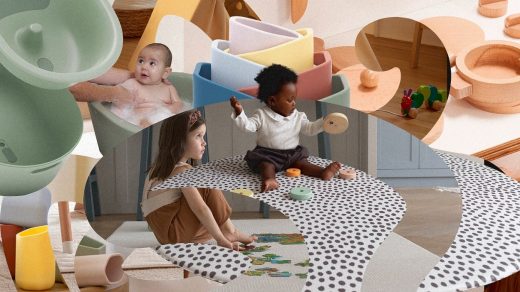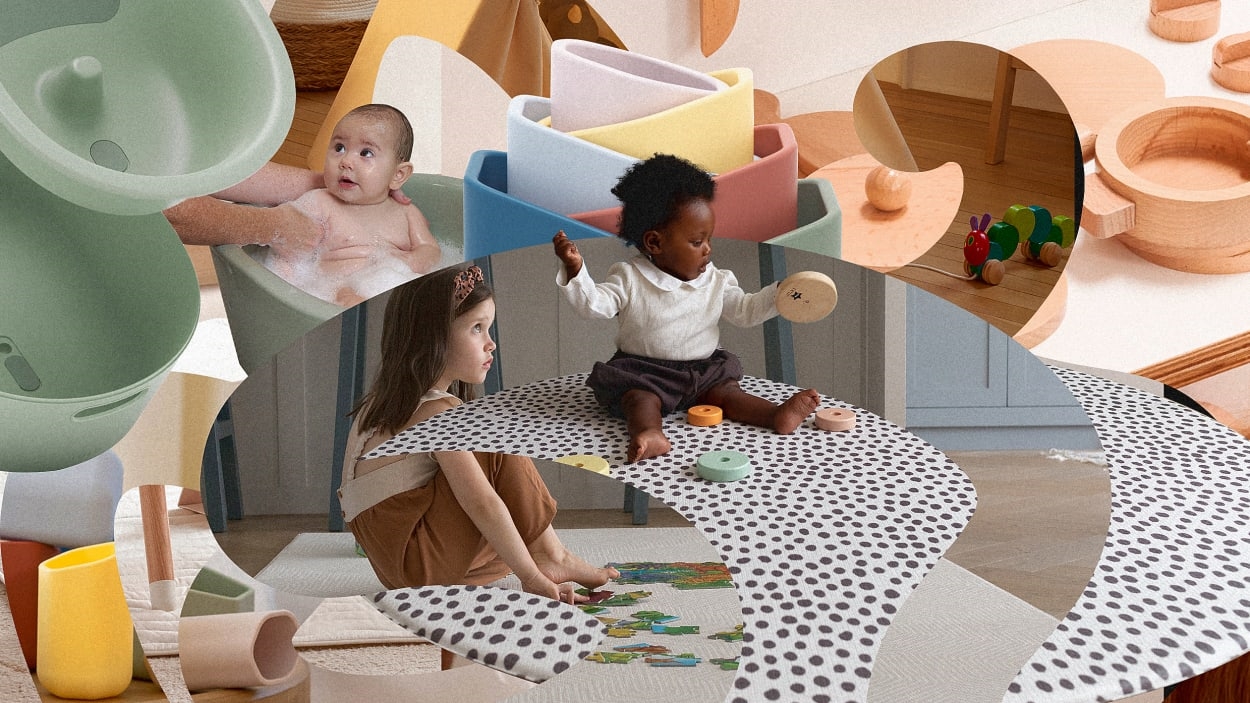Meet the high-design startups taking on the $30 billion baby furniture industry
There are some life-altering changes I expected when our baby came into the world, like sleep disruptions and new expenses. I was less prepared for how she would transform the aesthetics of our home.
In my twenties, I had cultivated a personal style, purchasing furniture and art that I loved. But after my daughter’s arrival, every corner of our home was littered with ugly plastic objects in primary colors: a bathtub in the shape of a bright blue whale, an orange play gym covered in jungle animals, a bouncer that looked like a giant green frog.
It’s an experience generations of parents have shared. In the 1950s, baby brands like Fisher Price, Graco, and Chicco realized they could create inexpensive, durable baby products from plastic. They flooded the market with inexpensive toys and furniture they believed would appeal to infants and toddlers, plastering products with cartoon characters in bright, highly saturated colors. This remained the aesthetic of childhood for decades, no doubt because it’s been highly profitable for these big players, who generate billions in annual revenue within the $31 billion baby furniture industry.
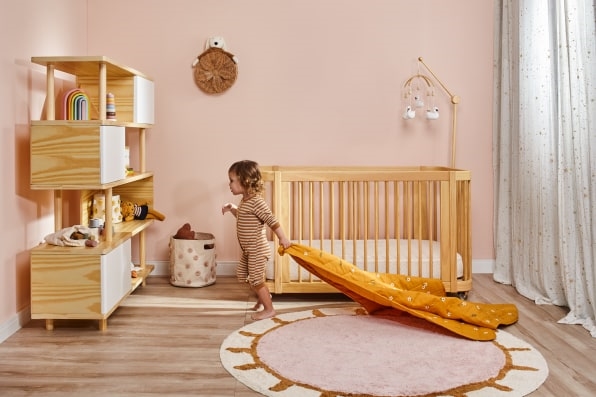
In recent years, though, this appears to be changing. A new generation of design-forward, direct-to-consumer baby startups has arrived, willing to take on the giants that dominate the sector. Brands like Lalo, Nestig, Babyletto, Dockatot, and Totter and Tumble focus on appealing to the aesthetics of the parents, rather than the child, creating everything from play mats to high chairs with clean lines and muted colors. Collectively, they are changing the look of the modern family home.
The post-Instagram home
Millennial parents have a different approach to home design than previous generations, according to the founders of Lalo, a three-year-old brand that sells high chairs, baby bath tubs, and play sets.
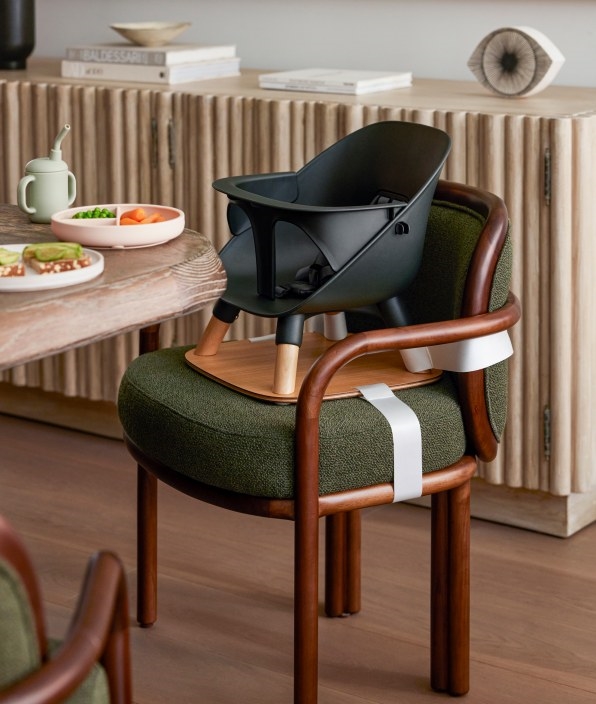
To inform its product design, Lalo convened a council of 60 parents and grandparents to help gather insights. They found that while parents in the past may have given up on trying to maintain a stylish home once kids arrived, many of today’s parents care deeply about the aesthetics of their home. This is partially due to the pressures that come with documenting and sharing their homes on social media. “Millennial parents are sharing intimate moments on Instagram, from their baby’s first bath to their first bites in the high chair,” says Greg Davidson, Lalo’s cofounder. “They’re constantly photographing their homes, and they don’t want to sacrifice their personal style just because they have a baby.”
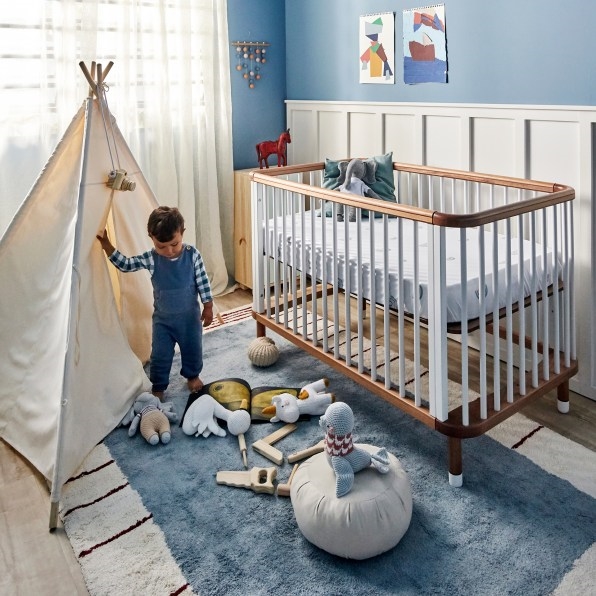
And yet, from a design perspective, most baby brands treat the infant, rather than the parent, as their customer. This is something Sara Adam Slywka observed firsthand. Prior to cofounding crib and nursery decor brand Nestig in 2020, she worked at Amazon on the baby registry department, where she saw the range of products on the market. She was taken by how homogenous everything looked—and how poorly they fit into modern interior design. “There’s a very distinct look in the world of baby products,” she says. “It’s a lot of loud colors and busy patterns, which look out of place in the modern home.”
This aesthetic emerged when the first baby companies, including Fisher Price and Graco, entered the market after the Great Depression, and it hasn’t changed significantly since then. Gary Weber, VP of design at Fisher-Price, says that the brand leans into its long history, capitalizing on the fact that today’s parents played with these toys growing up. “Fisher-Price has several iconic toys that have stood the test of time,” he says, referring to toys like Chatter Telephone, Rock-a-stack, and Corn Popper. “Our continued popularity among today’s parents is related to the fact that they grew up with us and that we offer such a wide range of gear and toys that meet a variety of design preferences and price needs.”
At the same time, Weber says that the brand is trying to modernize and actively works to appeal to parents, including hosting 1,850 parents in the brand’s lab to learn about their preferences. He points to a line of baby toys designed to be funny to adults, like tiny dumbbells that look like they’re working out or a mini to-go coffee cup and newspaper. From a design perspective, though, the color palette of these toys look much like the rest of the brand’s brightly colored products.
Over the decades, there have been a few exceptions to this mainstream baby aesthetic. In 1972, Norwegian brand Stokke launched a high chair called the Tripp Trapp whose simple wooden design is still highly coveted; in the 90s, Swedish brand Babybjorn began making its carrier and bouncers in fashion-forward colors that appealed to parents. These brands have become iconic precisely because they are so different from the rest of the industry.
Now, a new generation of baby brands aspires to bring sleek, minimalist design to the otherwise flashy, colorful baby industry. Many of these brands were founded by millennial parents who couldn’t find products they were looking for. “We were outsiders in this industry, but is was a good thing,” says Davidson. “Established brands in this space seemed to be just incrementally improving their products. Nobody was fundamentally rethinking their design.”
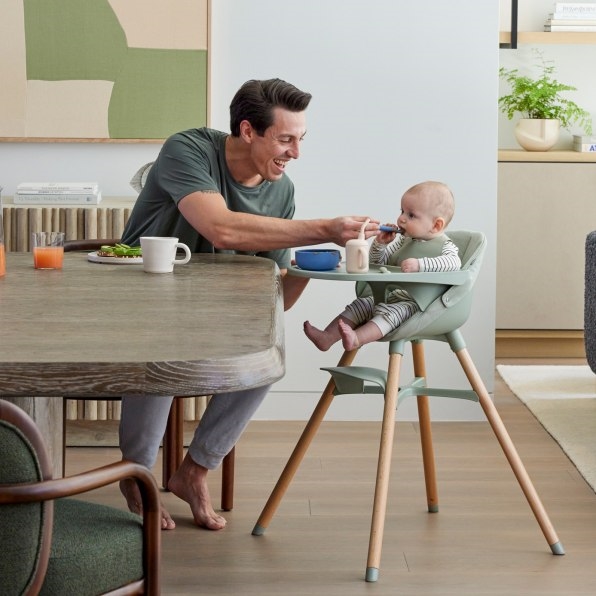
A highly regulated industry
But designing a baby product from scratch is no easy task. Since the 1970s, everything from cribs to infant bath tubs to changing tables have been governed by rigorous federal guidelines from the Consumer Product Safety Commission to ensure babies don’t get hurt. Mattel, which owns Fisher Price, has a 450-person team devoted entirely to product safety and compliance. One reason there hasn’t been many upstarts taking on the big players in the baby industry is that it can be daunting for a small new company to navigate this regulatory system.
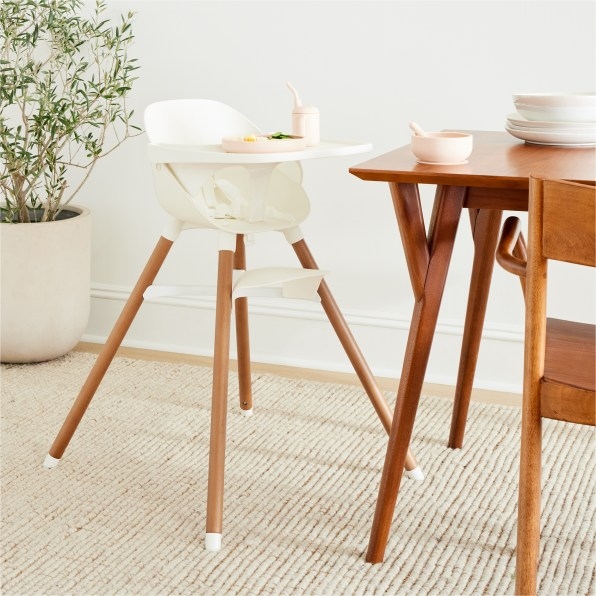
But over the past decade, direct-to-consumer startups have taken on large, well-regulated industries, including healthcare brands like Hims and Nurx, and furniture brands like Burrow and Floyd. The founders of baby brands believed they could create modern, well-designed products, while also putting them through the necessary testing. So, in 2016, Lalo’s founders decided to try their hand at creating a high chair.
High chairs are an ingenious invention that have been around for hundreds of years. Starting in the 1950s, baby brands started to mass produce high chairs using plastic and metal; over time, a standard high chair look began to take shape to accommodate the extensive regulations, like testing to ensure a child cannot tip the chair over or fall out in any direction. As a result, chairs tend to have legs that are spread out to make them more stable and a complicated system of straps to restrain the child. Ultimately, this results in a large, awkward piece of furniture. Parenting blogs are full of complaints about how bulky and ugly they are.
Lalo’s founders were convinced they could improve on this design. They hired a team of experts, including product safety professionals and industrial designers with a specialization in midcentury Scandinavian design. They made the chair more compact by bringing the legs closer together; to ensure stability, they bring the seat slightly lower, while ensuring the child is comfortably at eye-level with adults at the table. They made the legs from beech wood, while creating a sleek, streamlined look for the seat by making it from a single piece of plastic in muted colors like black, white, and sage green. And when the baby grows out of it, it can be converted into a play chair for a child to use with a small table.
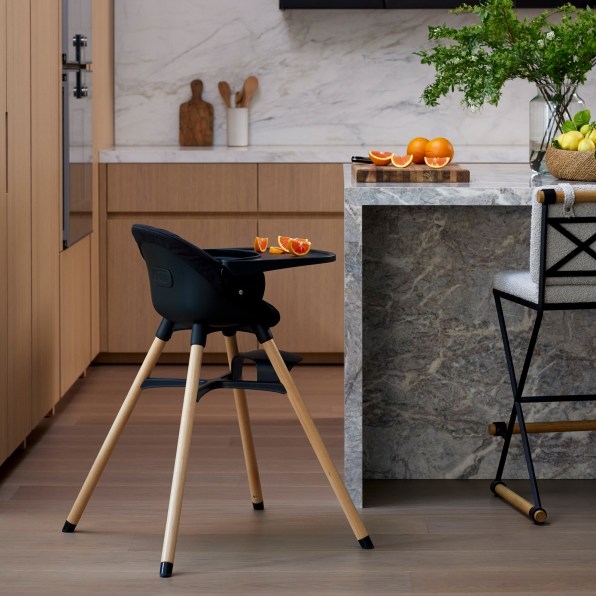
But the designers also found that they were occasionally constrained in what they could do. They wanted to make the tray easier to click in and out, for instance, but for safety, it had to have a mechanism that would make it impossible to come off if child placed their full weight on it. So the larger tray stayed.
Nonetheless, they landed on a modern, attractive design that immediately resonated with their target audience. When the high chair launched in 2019, it sold out instantly and continues to be a best-seller, one beloved by Blake Lively, Chrissy Tiegen, and Khloe Kardashian. Now, Lalo is bringing its same design approach to many other products, including a toddler kitchen play set, and most recently, a line of bath products. “We believe that we can balance form and function,” says Michael Wieder, Lalo’s other founder.
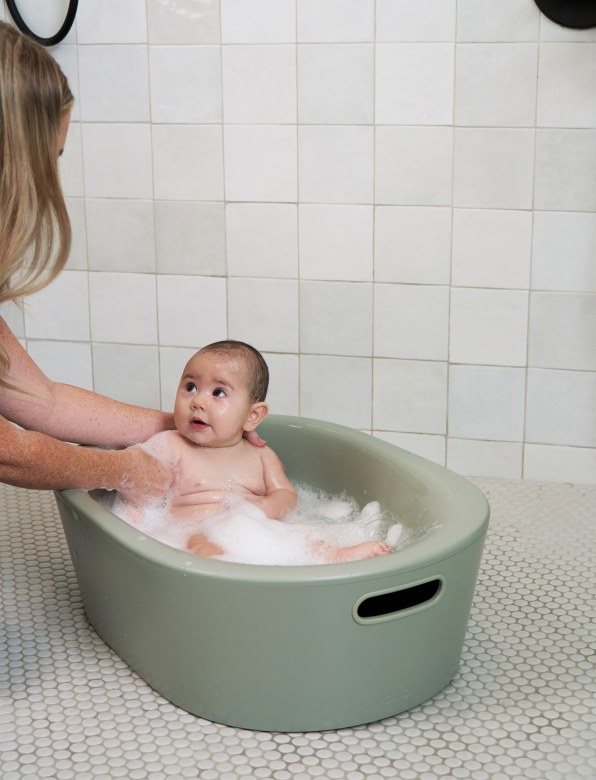
Whose aesthetic wins?
While these baby brands are focused on meeting the tastes of parents, it’s worth asking where the child’s preferences should come into play. After all, the home is where much of their early brain development takes place as they first learn about the world.
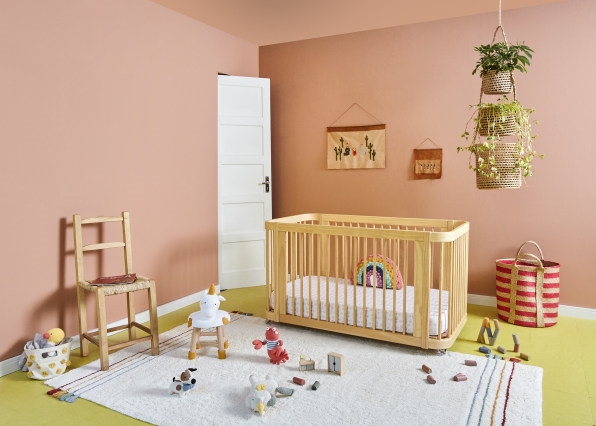
This is something that the founders of Lalo and Nestig think about often. They don’t believe there is a dichotomy between design that appeals to parents and children. Take color, for instance. Many of the legacy brands make products in bright, primary colors. And indeed, child development experts say that color is important to infant development, since they go from seeing the world in black and white having a sophisticated perception of color in the first six months of life. But most researchers argue that babies respond to a wide range of colors, not just saturated or primary colors. “We’re all for color,” says Davidson. “We offer products in green, blue and pinks. We’re just using a palette that blends in better with modern homes.”
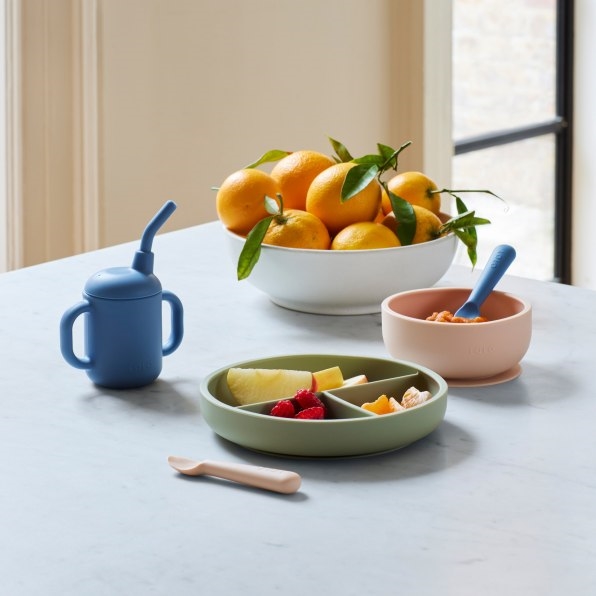
And while large baby brands plaster products with cartoonish animals or silly characters (sometimes in partnership with kid’s TV shows or movies), Slywka believes it is possible to bring in prints and illustrations that stimulate a child’s imagination, but that are also attractive to their parents. “A beautiful print can be equally interesting to an adult and a child,” she says. “It’s all about execution.”
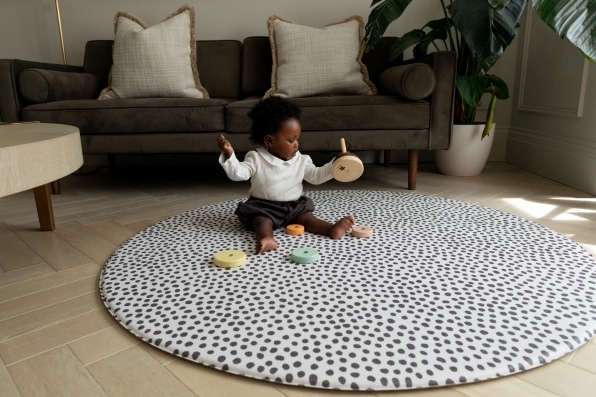
Several baby startups lean heavily into elegant prints. Susie Stubbs launched Totter and Tumble in 2018 to elevate play mats, which are thick plastic mats that babies and toddlers can play on without hurting themselves when they fall. Most mats on the market feature bright, garish patterns of animals or alphabets, but Stubbs’ team tracks the latest interior design trends to create mats elegant geometric shapes and prints from the iconic British design house Morris and Co. “Our mats are designed with children and adults in mind equally,” she says.
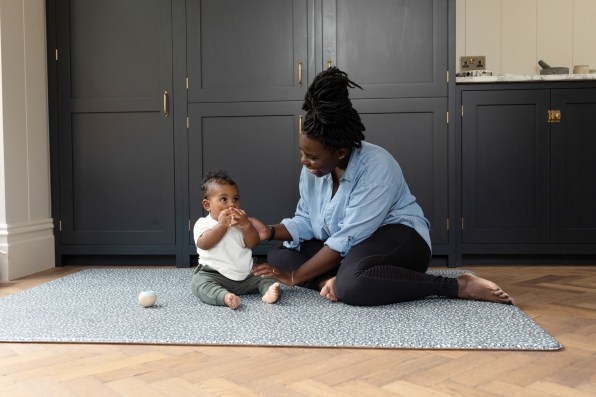
Nestig first launched wooden cribs in muted colors, but has since created a line of products for the modern nursery, including rugs, mobiles, and wallpaper. Many of the products contain prints that you might find in the pages of Dwell or Architectural Digest, but Slywka says that they’re all carefully picked to appeal to infants.
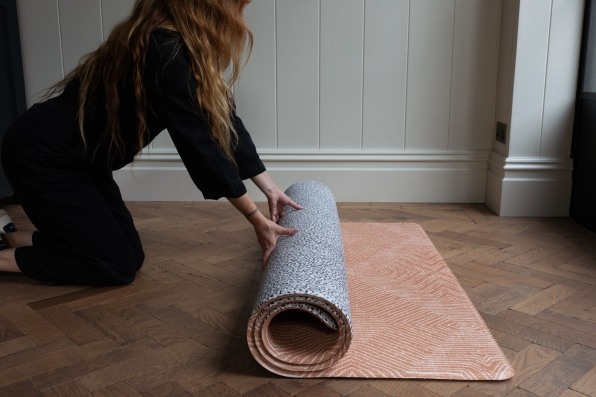
The brand recently collaborated with the TV personality Tan France who recently had a son, Ismail. After his first birthday, he started showing an interest in monkeys and other jungle animals based on books they read as a family. So Nestig created an elaborate mural featuring leopards, peacocks, and other creatures surrounding a tree. While it appeals to Ismail, it also calls to mind Mughal art and classic British prints, which France loves.
“It’s exciting bringing a new person into your family,” says Slywka. “Many parents enjoy the experience of creating a shared space. Sometimes, the nursery allows them to expand their aesthetic sensibility, exploring design they wouldn’t get to try elsewhere.”
Lalo’s Davidson agrees that the goal of baby design is not just to appeal to the parent, but to create a new visual language that speaks to both adult and child. “It’s a marriage of both aesthetics,” he says.
But he also acknowledges the parent only has a say for so long; there will come a time when the toddler will fall in love with a cartoon character and insist on buying products featuring it. “I’ll admit it,” he says. “We have Paw Patrol all over our house.”
(24)

